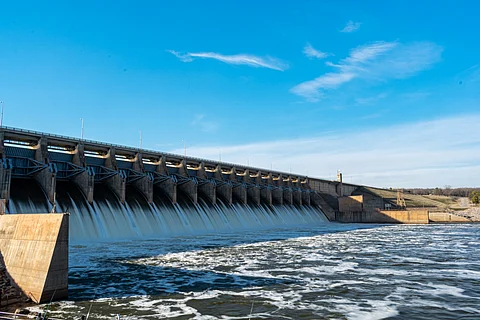

ISTOCK
Imagine standing next to a thundering waterfall. You feel the spray on your face, the roar in your ears, and the ground trembling beneath your feet. Now picture that unstoppable force being turned into electricity that powers your school, your home, and even your phone charger. That’s the magic of hydroelectricity — using the movement of water to create energy.
Hydroelectricity is one of the oldest and cleanest sources of power on the planet. The idea behind it is simple: moving water has energy. If you’ve ever tried to walk against a river current, you’ll know how strong it can be. By directing that powerful flow through turbines — huge machines with spinning blades — we can generate electricity without burning fossil fuels or releasing harmful gases into the air.
The story of hydroelectricity goes back more than a hundred years. In 1882, a small hydroelectric power plant in Wisconsin, USA, lit up a few buildings using energy from a nearby river. But the idea of using water to do work is even older. Ancient Greeks used water wheels to grind grain over 2,000 years ago. The concept hasn’t changed much — we’ve just made it smarter and more efficient.
Most hydroelectric power today is produced by dams. These are giant walls built across rivers to hold back water and create reservoirs — large, artificial lakes. When the water is released from the reservoir, it flows through tunnels and hits the turbine blades. The turbines spin, powering a generator that converts the motion into electricity. Finally, the water continues down the river, just like before.
One of the most famous examples is the Hoover Dam in the United States. Built during the 1930s, it still generates electricity for millions of people. Closer to home, India’s Bhakra Nangal Dam and the Tehri Dam are key sources of hydroelectric power. These projects don’t just produce energy; they also help with irrigation and flood control.
Hydropower has many advantages. It’s renewable — as long as there is rain and rivers, we’ll have moving water. It’s also clean — it doesn’t pollute the air or cause climate change. And it’s reliable. Unlike solar panels, which depend on sunshine, hydro plants can generate power day and night, rain or shine.
But there are some downsides too. Building dams can be expensive and time-consuming. Sometimes, large areas of land, including forests and villages, must be flooded to make way for a reservoir. This can affect animals, plants, and people who live in the area. Fish that swim upstream to lay eggs can also be blocked by dams, which disrupts their life cycle.
That’s why scientists and engineers are always looking for better ways to harness water power. One solution is the “run-of-the-river” system. Instead of building a huge dam, these smaller plants use the natural flow of a river to turn turbines. They produce less electricity, but they don’t need massive reservoirs or cause as much environmental damage.
Another exciting area is tidal power, where the rise and fall of ocean tides are used to spin turbines. This type of energy is still being developed, but it shows how water, in all its forms — rivers, lakes, and oceans — could power our future.
Hydroelectricity also plays a big role in fighting climate change. Since it doesn’t rely on coal, oil, or gas, it helps reduce the amount of carbon dioxide released into the atmosphere. Many countries are now investing in hydropower to cut their carbon emissions and shift towards greener energy sources.
India has great potential when it comes to hydroelectricity. With so many rivers — from the Ganga and Yamuna in the north to the Krishna and Kaveri in the south — the country has been using water power for decades. Today, hydroelectricity makes up a big part of India’s renewable energy mix, helping to light up towns, villages, and even remote mountain areas.
The Three Gorges Dam in China is the biggest power station on Earth—producing more electricity than any other plant, and it's all powered by water!
While we hear a lot about solar and wind, hydroelectricity is actually the most widely used renewable energy source in the world.
It was built in Wisconsin, USA, and powered a few buildings using the energy of flowing water—over 140 years ago!
Around 95–99% of Norway’s power comes from hydroelectric plants. That means nearly the whole country runs on clean, river-powered energy!
When you flick a light switch in a home powered by hydroelectricity, it takes less than a second for water behind a dam to generate the needed power.
Hydropower doesn’t "use up" water. The same water that spins turbines flows right back into the river to keep going.
Many hydro dams build ‘fish ladders’—structures that help fish swim around or over dams so they can still migrate upstream.
Small-scale hydro systems can provide electricity to a single home or village, using just the power of a fast-flowing stream.
Though it sounds small, the kinetic energy from falling water — even in a tiny stream — can be captured and converted to electricity. In remote villages, micro-hydro setups can light homes using streams no wider than a footpath.
Some hydro plants don’t just generate electricity — they store it. Pumped-storage systems move water uphill when extra electricity is available and release it downhill to generate power when demand is high. It’s like a rechargeable water battery!